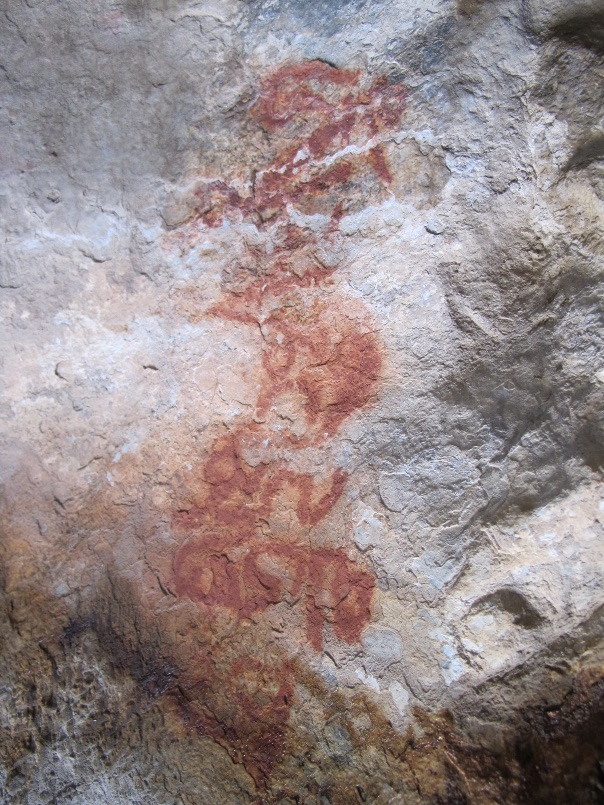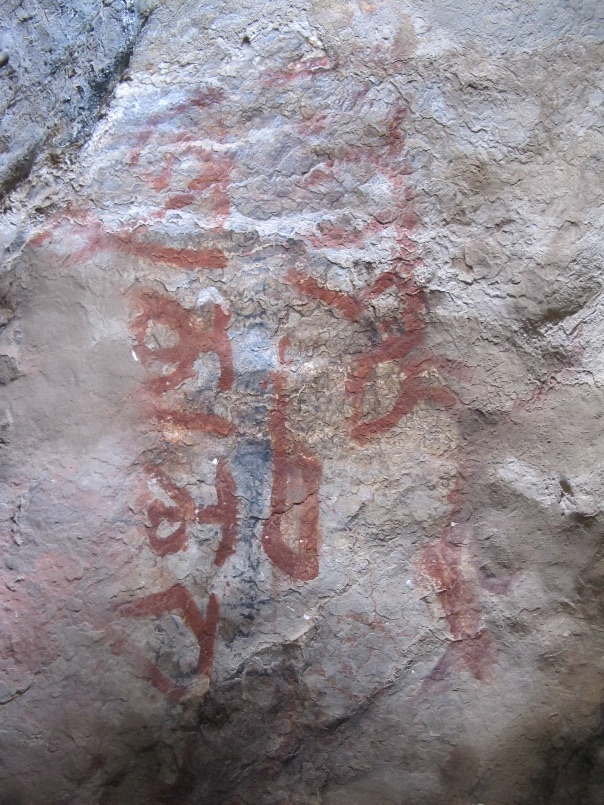A taste of Old Uyghur
It's not every day that you get a chance to experience Old Uyghur (language; script). Recently, when I was looking through albums of photographs of medieval Buddhist wall-paintings, I spotted an Old Uyghur inscription:
(click to embiggen)
That's from a Five Dynasties (907-979) transformation tableau (biànxiàng 變相) depicting the story of the Buddhist saint, Mahāmaudgalyāyana, rescuing his mother from hell. It is located on the north side of the corridor to the antechamber to Cave 19 at Yulin Grottoes toward the western extremity of Gansu Province, part of the larger complex of medieval Buddhist caves at Dunhuang, which we have often mentioned on Language Log. For the complete and heavily annotated translation of the transformation text on Mahāmaudgalyāyana (Mùlián 目連), see Victor H. Mair, Tun-huang Popular Narratives (Cambridge [Cambridgeshire] ; New York: Cambridge University Press, 1983).
Read the rest of this entry »





